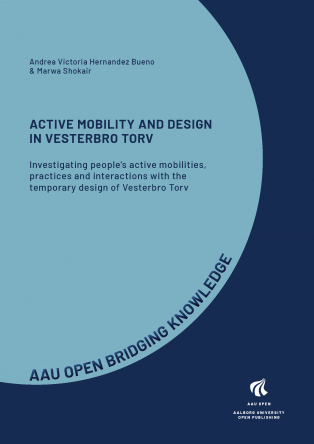Active Mobility and Design in Vesterbro Torv: Investigating people’s active mobilities, practices and interactions with the temporary design of Vesterbro Torv
Contributors
Keywords
Design, Vesterbro Torv, Active mobility, Urban design
Synopsis
This report investigates active mobilities from the users’ perspectives in the temporary design of Vesterbro Torv in Aarhus, Denmark. Ethnographic and urban design research was conducted to understand the temporalities of people’s mobilities and interactions on the site, uncovering nuanced everyday life situations. We investigated: How do the temporary design and design elements of Vesterbro Torv facilitate and/or hinder active mobility and social practices? Who are the users, and how do they interact with the square in its temporary condition? What are their movement patterns and motivations?
A multi-method approach was adopted, combining desktop research, ethnography, urban design mapping and analysis, and insights from the collaboration and discussions with Aarhus Municipality to gain a comprehensive understanding of the square’s dynamics. The research results indicate that Vesterbro Torv works as an urban node that facilitates active mobility, transit, and social interaction. The temporary arrangement of the square affords diverse and spontaneous cycling and pedestrian mobility patterns through and across the square. In some situations, the interaction between pedestrians and cyclists creates disruptions and conflicts due to the need of defining clear separation between mobility paths. In addition, the temporary spatial arrangement facilitates diverse social activities and opportunities to stay.
The results from the interviews and observations revealed the need for more calm and inclusive areas for resting and moving, particularly for children, families, elderly, and people with mobility challenges (e.g., wheelchair users). Moreover, users expressed the need for more greenery, legibility and organized spaces to stay, linger and move around.
Chapters
-
Reading Guide
-
Acknowledgement
-
Introduction
-
Theories and Methodologies
-
The Case of Vesterbro Torv
-
Place Analysis of Vesterbro Torv
-
Who are the users?
-
How do people use the square?
-
How do users move? In which way and why?
-
Conclusion
-
References
-
Illustrations List


